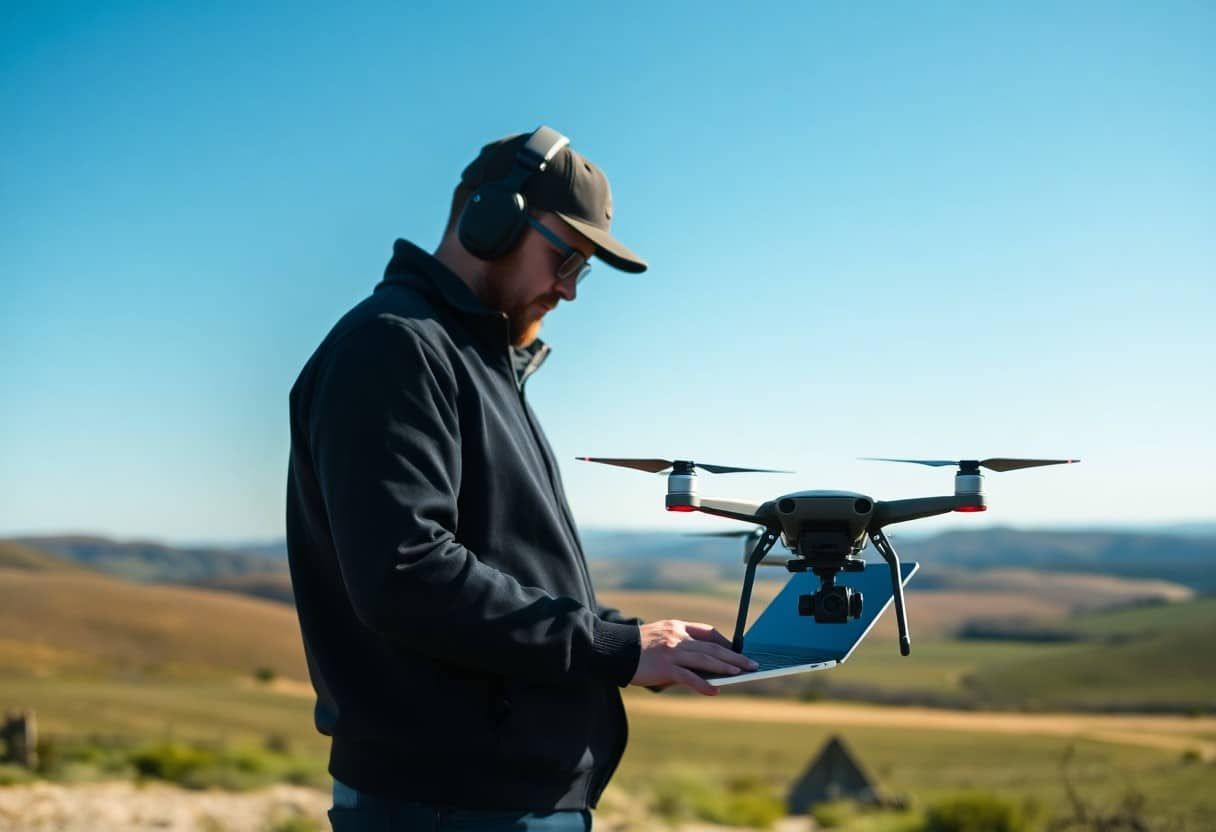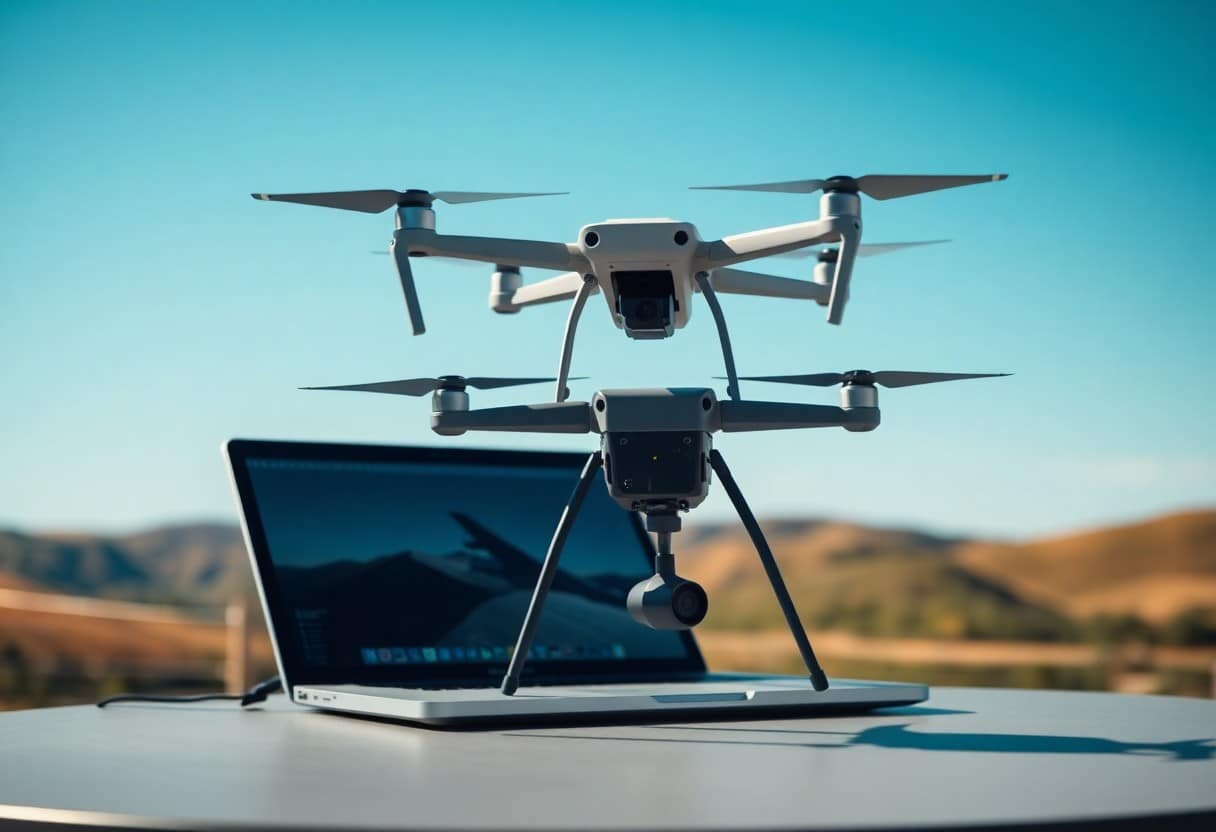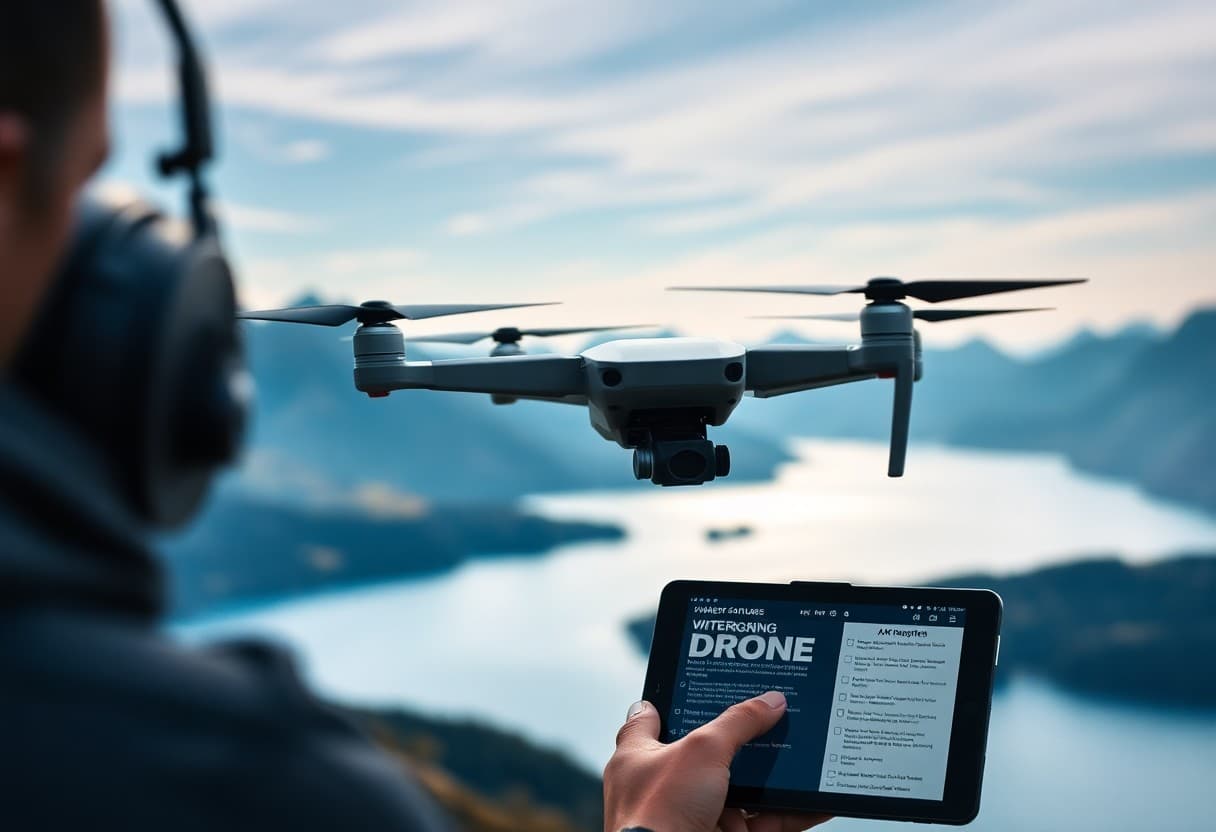Streamline Your Drone Authorization Process - 5 Steps to Success
When operating a UAV (Unmanned Aerial Vehicle), you may be faced with a cumbersome authorization process. This not only affects your time, but can also lead toLegal IssuesmaybeSafety hazardsYou can simplify the authorization process more efficiently with our five carefully planned steps. With our carefully planned five-step process, you can streamline the authorization process more efficiently and protectBusiness ComplianceandOperational safetyBefore you begin. Knowing these steps before you begin will make your drone flights smoother and give you the confidence to face challenges.

Important points:
- Developing the Program: First, ensure that there are clear goals and plans to guide the authorization process.
- Understanding Regulations: In-depth knowledge of local and international drone-related regulations for compliance.
- Preparation of Papers: Prepare all required documents and application information in advance to speed up the process.
- Utilizing Technology: Use software tools and platforms to automate and streamline the licensing process.
- Continuous Communication: Maintain regular contact with the relevant authorities to ensure that issues are resolved in a timely manner.
- Training Team: Provide appropriate training to the team on authorization processes and specifications.
- Evaluation and Adjustment: Conduct an assessment to optimize the process and enhance efficiency upon completion of the authorization.
Understanding Drone Authorization
In today's drone industry, it is important to knowDrone AuthorizationThe process of obtaining the proper authorization is critical. Whether you are a professional airline operator or an amateur, obtaining the proper authorization can ensure that your flying activities are legal and safe. Knowing the different forms of authorization can help you get your project off the ground and avoid unnecessary legal issues.
Drone Authorization Type
There are several main types of licenses in drone licensing, and these licenses vary based on different operational requirements. It is important for you to understand the requirements of each type, and the following are some common types of licenses:
- Business License
- Entertainment License
- Research Authorization
- Special Purpose Authorization
- Self-defined authorization
An understanding of these authorization types will help ensure that you can legally perform drone operations.
Importance of Compliance
comply withComplianceRequirements are an integral part of drone operation. You need to be aware of local laws and industry standards to ensure that you are not operating in violation of them. Compliance protects you from liability and ensures safe flight.
Compliance not only reduces your legal exposure, it also enhances your industry'sReputationThe legal execution of your operations will enhance your relationship with your customers and partners and generate trust in your professionalism. Conducting your operations legally will enhance your relationships with your customers and partners and instill confidence in your professionalism. Neglecting compliance can expose you toHeavy PenaltyYou are at risk of losing your business and losing your industry license. Therefore, you need to prioritize the importance of compliance to protect yourself and your business from potential losses.

Step 1: Prepare Your Drone Documentation
Before you begin your drone authorization process, you will need to prepare your documents first. These documents will help you stay organized and ensure that you are complying with all regulations. You can refer to10 Steps to Mastering the Rules for Commercial Use of DronesYou will be able to get guidance on how to do this. By being well-prepared, you will be able to take the next steps smoothly.
Documentation requirements
When preparing your drone license, you need to be sure to have all theRequired documentationThis includes the certificate of registration of the drone, the operator's manual, the insurance certificate and the flight plan. Ensure that the documentation is complete and up-to-date so that delays in the authorization process can be avoided.
Best Organizational Practices
When working with drone files, keepGood organizationis key. Regularly check your files to make sure they are up-to-date and use folders or digital storage tools to organize them so you can quickly find the information you need. Not only does this help you access data quickly when you need it, but it also demonstrates your professionalism during authorization checks.
For optimal organization, you may want to consider using color-coded labels or document management software to categorize and record your drone documents. This will not only increase efficiency, but also reduce the stress you may face during the authorization process. Make sure that all of your documents are accessible at all times so that you won't panic if necessary. Good organizational practices will make your authorization process smoother and more efficient.
Step 2: Conduct a Risk Assessment
During your drone authorization process, conduct aRisk AssessmentThis is an important step. This will not only help you to identify the challenges you may encounter in your operations, but also ensure that your drone is operating within the regulations. It is recommended that you refer to theWhat aerial composition tips make your drone photography stand out?We are here to help you effectively identify risks and develop countermeasures.
Identify potential risks
When conducting a risk assessment, you need to systematicallyRecognitionAll potential risks, which include meteorological conditions, other aircraft in the flight area, and possible human error. By identifying these risks, you will be able to prepare for the next steps.
Mitigation Strategies
Once you've identified the risks, the next step is to developMitigation StrategiesThese strategies should include flight plan adjustments, implementation of surveillance systems, and regular training to ensure that all operators are familiar with the situation and respond quickly. These strategies should include flight plan adjustments, implementation of monitoring systems, and regular training to ensure that all operators are familiar with potential situations and can react quickly. Effective mitigation strategies can significantly reduce the likelihood of accidents.
in formulatingMitigation StrategiesYou should prioritize the most dangerous scenarios and develop specific countermeasures, such as keeping a distance from neighboring aircraft, regularly checking the technical status of the drone, and considering the use of automated systems to minimize the risk of operational errors. Through these efforts, you can maximize the safety and effectiveness of your drone operations.

Step 3: Submit your application
After you've prepared all the necessary documents, it's time toSubmit an Applicationup. Make sure you follow all guidelines to avoid unnecessary delays. You can refer to theStep by Step - The 6 Best Techniques for Drone 3D ModelingCome learn about the latest application process and requirements.
Choosing the right application method
Depending on your needs and flight plan, you will need to choose an appropriate application method. This may include an online guaranteed application or a manual submission. Choosing the right method will save you time and increase your success rate.
Common Application Pitfalls
Understanding common application pitfalls is important for successful licensing. Many applicants are denied because they provide incomplete information or fail to follow guidelines. Make sure you check every detail carefully to avoid these mistakes.
Some of the most common questions that many people encounter during the application submission process includeIncorrectly completed documents, failure to submit additional materials as requiredup toNeglect of Deadline. For example, a program presentation may not be clear enough or may fail to meet specific geographic requirements. These small errors often lead toDelayed or Complete DismissalYou are applying, so be sure to check every detail and make sure you follow all the application requirements.
Step 4: Follow Up on Your Application
After submitting your application for a drone authorization, it is important that you take the initiative to follow up and make sure that everything goes smoothly. Following up not only shows your professionalism, but also identifies potential problems or delays early on, which is vital to ensure your application is approved on time.
Maintaining Communication
Maintaining close communication with the reviewing organization is indispensable. Regular enquiries will allow you to keep track of the progress of your application and provide any supplementary material if required. Ensuring that you know who is in charge of your case and staying in touch will help make the application more efficient.
Expected Schedule
The processing time for each drone authorization varies by region and type of application. Generally, you should expect processing times to range from a few weeks to a few months, so it's important to submit your application early. Knowing your local processing times can help you plan better and reduce unnecessary waiting anxiety.
Examination of previous application casesThis will help you to better predict your timetable. Some areas may experience delays due to high application volumes, so it may be worth checking the progress of your application with the responsible unit in advance. If you find that the processing time is longer than expected, you should follow up promptly and be patient, as ultimately obtaining authorization will bring long-term benefits to your drone operations.
Step 5: Implement the Audit Process
After each authorization process, you will need to implement theAudit ProcessThis process will help you to ensure that all authorization decisions are based on clear criteria and comply with relevant laws and regulations. This process will help you ensure that all licensing decisions are based on clear criteria and comply with relevant laws and regulations. Through systematic review, you will be able to identify and resolve potential issues to optimize future licensing applications.
Evaluation of Authorization Results
Evaluating authorization results is a critical step in implementing the audit process. By analyzing the success and failure rates of your drone authorization cases, you can gather valuable data to understand where improvements are needed. This process not only improves the efficiency of your authorization, but alsoIt also prevents you from repeating the same mistakes in the future.The
Continuous Improvement
Continuous improvement is another important strategy to ensure the effectiveness of your authorization process. After each evaluation, you should make adjustments to the process based on the results to improve overall efficiency and security. It's important to gather regular feedback and follow the latest specifications and technologies. This will not only improve the quality of your authorizations, but also convince the organization of your ability to optimize the process.
Continuous improvement means you have toConstant Reviewand adapting your authorization process to changing circumstances and regulations. This involves creating a flexible process to gather feedback on licensing outcomes, user satisfaction and real-world challenges. ByIntegration of technological innovationsWith the latest industry standards, you can improve the quality and security of your authorization process, making it more efficient and easier to manage.
Frequently Asked Questions
Q: What is the Drone Authorization Process?
A: The drone authorization process is the step-by-step process of obtaining the required permits and approvals prior to conducting drone operations. This usually involves filling out an application, submitting technical documentation, and following local and international aviation regulations.
Q: How can I streamline my drone authorization process?
A: The following five steps can be taken to streamline the drone authorization process: 1. confirm the relevant laws and regulations; 2. prepare the necessary application documents; 3. use a digital platform to submit the application; 4. follow up on the status of the application on a regular basis; and 5. keep all records for future reference.
Q: What documents are necessary to apply for a drone license?
A: Depending on the region, the necessary documents may include: proof of drone registration, operation plan, risk assessment report, proof of insurance and pilot's qualifications.
Q: How long does it usually take to get a drone license?
A: The time it takes to obtain a drone authorization varies depending on the region and the complexity of the case. Typically, it can take anywhere from a few weeks to a few months from the time an application is submitted to the time an authorization is granted.
Q: What should I do if my application for a drone license is denied?
A: If an application is rejected, you should carefully examine the reasons for the rejection and make changes as necessary. Consider seeking professional advice or legal assistance to ensure that all requirements are met when you resubmit.
Q: How can I ensure that my drone operation complies with local laws?
A: To ensure that your drone operations are in compliance with local laws, check your local aviation authority's website regularly, attend relevant training, and stay in touch with industry professionals to stay up-to-date on regulatory changes.
Q: What digital tools can I use to help with the drone authorization process?
A: There are a number of digital tools that can help streamline the drone licensing process, including specialized application platforms, flight management applications, and cloud storage solutions that can improve application efficiency and ease of document management.




